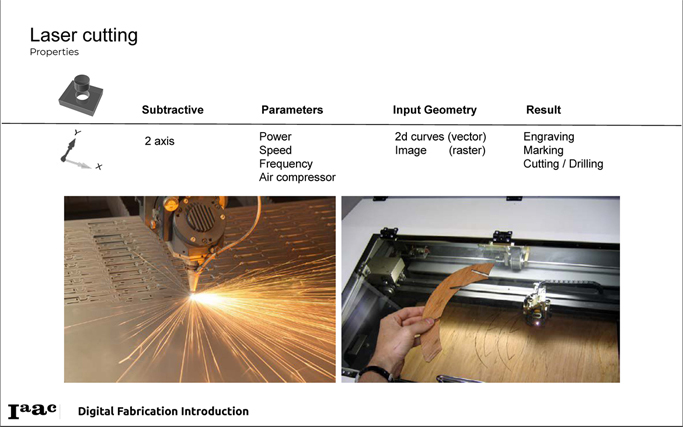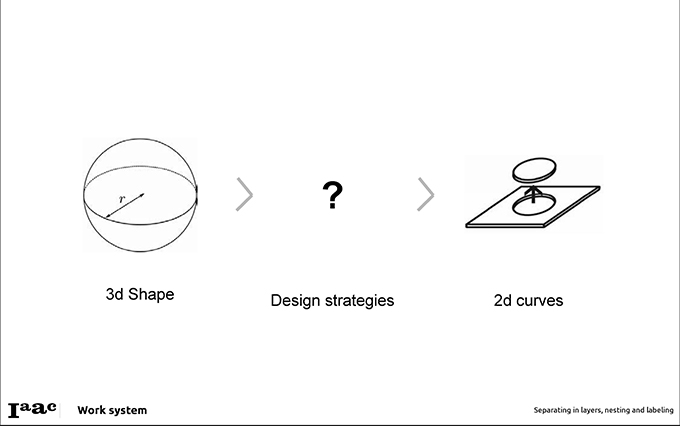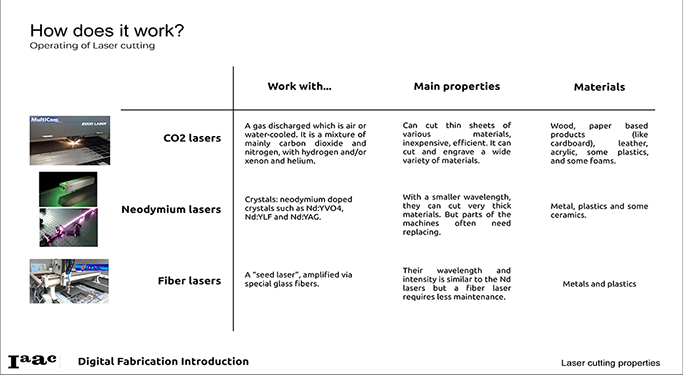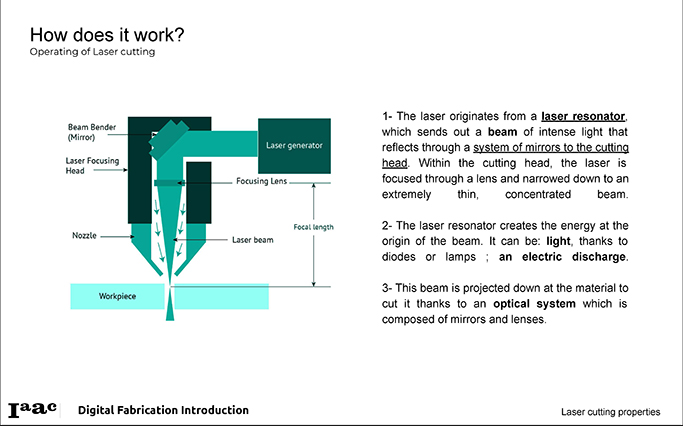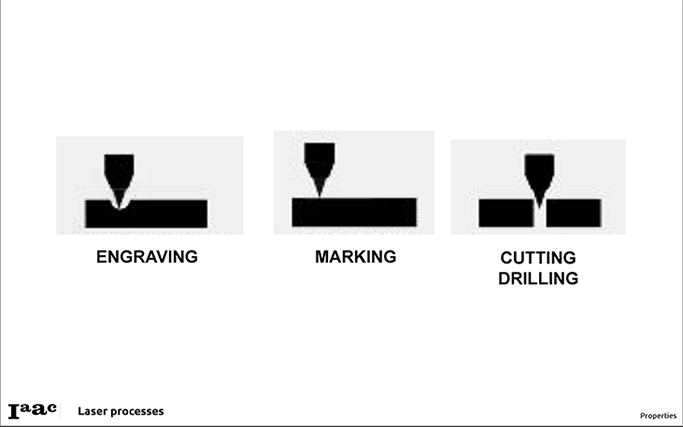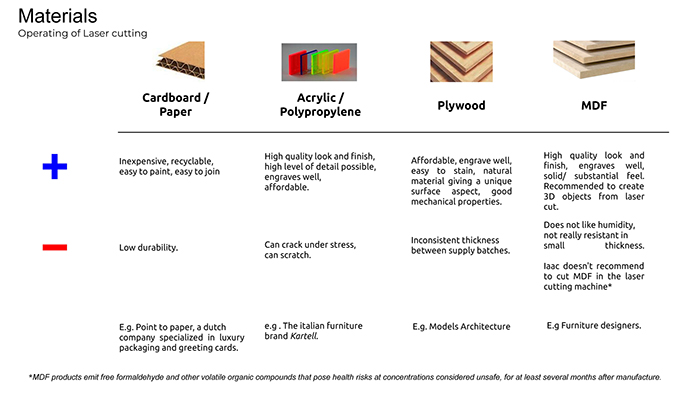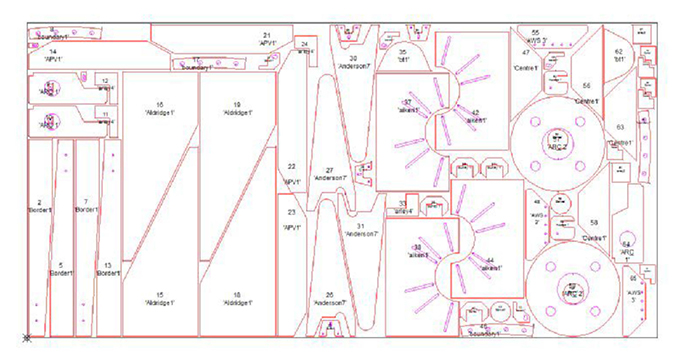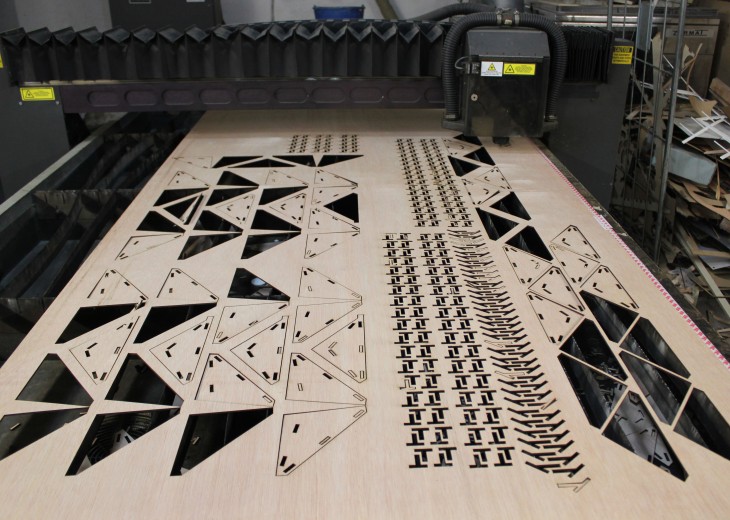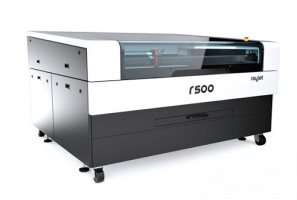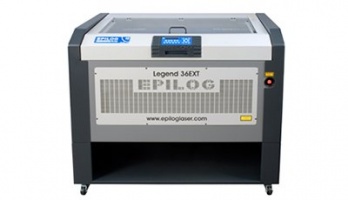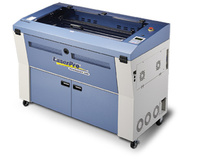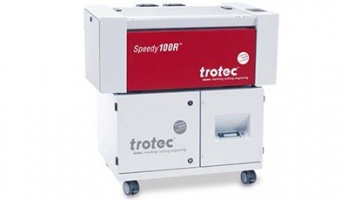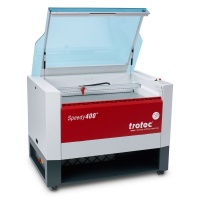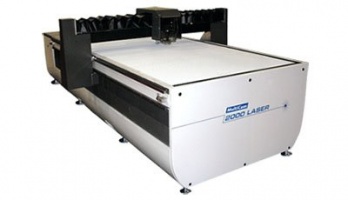Laser Cutting
Laser cutting is a technology that uses a laser to cut materials. Laser cutting works by directing the output of a high-power laser most commonly through optics. The laser optics and CNC (computer numerical control) are used to direct the material or the laser beam generated. A typical commercial laser for cutting materials would involve a motion control system to follow a CNC or G-code of the pattern to be cut onto the material. The focused laser beam is directed at the material, which then either melts, burns vaporize away, or is blown away by a jet of gas, leaving an edge with a high-quality surface finish. Industrial laser cutters are used to cut flat-sheet material as well as structural and piping materials.
Laser cutting properties
Contents
- 1 History
- 2 How do I learn laser cutting?
- 3 Laser cutting Types
- 4 So, How does a C02 Laser Work?
- 5 Materials
- 6 Few steps/tips for doing correctly your FILE work
- 7 Few steps/tips to develop your work at the MACHINE
- 8 Methods
- 9 Tolerances and surface finish
- 10 Machine configurations
- 11 Power consumption
- 12 Production and cutting rates
- 13 Related Machines at IAAC
History
In 1965, the first production laser cutting machine was used to drill holes in diamond dies. This machine was made by the Western Electric Engineering Research Center.[2] In 1967, the British pioneered laser-assisted oxygen jet cutting for metals.[3] In the early 1970s, this technology was put into production to cut titanium for aerospace applications. At the same time CO2 lasers were adapted to cut non-metals, such as textiles, because, at the time, CO2 lasers were not powerful enough to overcome the thermal conductivity of metals.
The C02 laser is one of the earliest gas lasers. Developed by Kumar Patel in 1964, it is still one of the most useful lasers today. With its high power and levels of control, C02 lasers can be used for applications requiring precision, mass production and most importantly, personalization. C02 laser engravers and cutters are highly precise and can be used to create designs, decorations, and the like on just about any material you can think of, including wood, plastic, metal, and paper to name a few.
How do I learn laser cutting?
Operational procedure: The laser cutter can use vector file information and raster image information from a variety of programs, such as Rhinoceros, Adobe Illustrator, Corel Draw, Adobe Photoshop, Inkscape and other graphic programs. In IAAC we are usually working in Rhinoceros in our workflow with Laser cutter machines.
Working with industrial lasers require exporting a transfer file with the 2D geometry to be cut, as these machines do not work like printers and virtually none will accept native Rhino 3D files. They may also require the 3D geometry from Rhino to be converted to curves before exporting.
CURVEfitting freeform geometry: Laser cutting machines and machine software only understand curves. So, to cut parts successfully, it is necessary to convert any free-form NURBS (splines) or Mesh(vertices, edges and faces) geometry in your file into a series of curves. By convert, we mean that the input geometry is approximated by a lines geometry containing only curves segments. Control the approximation tolerance by using the correct settings during the conversion process would be key in your final result.
Geometry repair and nesting Overlaps, gaps, and duplicate curves cause problems in cutting. You can use different commands in the software to carefully avoid these results. Later, you should probably nest many profiles together onto standard stock sheets. Nesting correctly the work optimize the waste of material. Try to figure out the best way to maximise the use of materials and processes they undergo. Look carefully at your design and get rid of anything that could be considered superfluous.
Laser cutting Types
At present, laser cutting machines can be divided into three types based on lasers: CO2, Neodymium-doped Yttrium Aluminum Garnet (Nd-YAG) and optical fiber.
CO2 Laser cutter machines
Process: A gas discharged which is air or water-cooled. It is a mixture of mainly carbon dioxide and nitrogen, with hydrogen and/or xenon and helium. The CO2 laser transmission medium is air, which travels in a straight line and changes its transmission direction by a mirror. It is susceptible to the external environment and may require the maintenance of these mirrors, thus slightly increasing the cost of use.
Main properties: Can cut thin sheets of various materials, inexpensive, efficient. It can cut and engrave a wide variety of materials.
Materials: Wood, paper-based products (like cardboard), leather, acrylic, some plastics, and some foams.
Neodymium laser cutter machines(Nd-YAG)
Process: YAG laser definition: Neodymium-doped Yttrium Aluminum Garnet (Nd-YAG) laser is a solid-state laser in which Nd: YAG is used as a laser medium. These lasers operate in both pulsed and continuous mode. Nd: YAG laser generates laser light commonly in the near-infrared region of the spectrum at 1064 nanometers (nm).
Main properties: With a smaller wavelength, they can cut very thick materials. But parts of the machines often need replacing.
Materials: Metal, plastics and some ceramics.
Fiber Laser cutter machines
Process: A “seed laser”, amplified via special glass fibers. The transmission medium of the fiber laser is an optical fiber, and the light beam is enclosed in the optical fiber and “curve propagation” is not affected by the external environment.
Main properties: Their wavelength and intensity are similar to the Nd-YAG lasers but a fiber laser requires less maintenance.
Materials: Metals and plastics
In conclusion, with the continuous development of technology, the cutting efficiency of Nd-YAG cutting machine is low, the photoelectric conversion rate is high, and the use cost is relatively high, so it has gradually withdrawn from the historical stage.
Fiber lasers have short-wavelength characteristics that increase the absorption of the beam by the cutting material and can cut materials such as brass and copper as well as non-conductive materials. A more concentrated beam produces a smaller focus and a deeper depth of focus, so that fiber lasers can quickly cut thinner materials and cut medium thickness materials more efficiently.
The CO2 gas laser system requires regular maintenance, the mirrors require maintenance and calibration, and the resonant cavity requires regular maintenance; the fiber laser cutting solution requires virtually no maintenance. Compared to CO2 cutting systems, fiber cutting solutions are more compact and have less impact on the ecological environment, so less cooling is required and energy consumption is significantly reduced. CO2 lasers are the most widely used. CO2 lasers will be lasers that capacity on a blend of carbon dioxide gas that is then controlled electrically and have a great degree high proficiency and highlight a magnificent nature of laser beam. They are mainly suited for working on non-metallic materials and on most plastics. CO2 Laser has relatively high efficiency and features a very good beam quality.
So, How does a C02 Laser Work?
In a C02 laser cutter, light is produced when electricity runs through a gas-filled tube with mirrors at both ends. One mirror is fully reflective while the other one lets some light come through. These mirrors guide the laser beam into the material that is to be cut. The gas is typically a mixture of carbon dioxide, nitrogen, hydrogen, and helium. Any light produced by C02 lasers is extremely powerful compared to normal light. This is because of the mirrors that bookend the tube of gases. These mirrors reflect most of the light travelling through the tube and cause the light waves to build in intensity. The light only passes through the partially reflective mirror when it becomes bright enough. Since the light from a laser is infrared, it is invisible to the human eye. It also has a very long wavelength. It can cut a variety of materials, including cloth, wood, metal, glass, and paper. The intense heat from this light vaporizes the material that is going to be cut, leaving an accurate, smooth finish. Depending on the look you are going for on your material and what material you are cutting or engraving, the speed and power settings can be decreased and increased. Testing your material beforehand is a good practice and will get you closer to perfect results, every time.
In CO2 Laser Cutting, you can develop three types of operations: Vector Cutting, Vector Engraving, Raster Engraving(Marking).
Materials
In IAAC, we highly recommend to consider the following parameters related to materials to work with in regards to CO2 Laser cutting machine:
Materials you should NOT process with a laser cutting machine☢
- Poly Vinyl Chloride (PVC)
- Polyvinyl butyral (PVB)
- Polycarbonate
- Acrylonitrile butadiene styrene (ABS)
- HDPE (Milk bottle plastic)
- Polystyrene FOAM
- Polypropylene FOAM
- Fiberglass
- Coated CARBON FIBER
- PETG, or Polyethylene terephthalate, it’s a lightweight thermoplastic that has high impact strength, an appealingly glossy finish, and purity that makes it perfect for packaging food and pharmaceuticals. PETG products are easy to die-cut and thermoform without upsetting structural integrity. PETG is a neat material, being food-safe, appealingly clear, and impact-resistant. It also has a reputation for being somewhat difficult to cut, as it melts and sticks to itself, not vaporizing as cleanly as acrylic. PETG and other nylon filaments are a toxic material, which is not recommended to laser cut due to emitting high rates of toxic particles while cutting.
- Leather and artificial leather that contains chromium (VI)
- Polytetrafluoroethylenes (PTFE /Teflon)
- Beryllium oxide
- Any materials containing halogens (fluorine, chlorine, bromine, iodine and astatine), epoxy or phenolic resins
Care should be taken with the following materials:
- Manganese
- Chromium
- Nickel
- Cobalt
- Copper
- Lead
☢IMPORTANT. If you want to work with any of the materials mentioned in the previous list, please inform the Fab Team staff before using the machine.
Few steps/tips for doing correctly your FILE work
1) Nesting correctly the work optimize the waste of material. Try to figure out the best way to maximise the use of materials and processes they undergo. Look carefully at your design and get rid of anything that could be considered superfluous.
2) Create your own vector/raster file. File type: Open dxf, .dwg, EPS, CDR, PDF, .3dm is the most commonly used, we recommend this format, or compatible file with Rhino.
3) Prepare your file in mm units. (verify your material dimensions according to laser cutting machine bed size. See Technical details in Machines chapter)
4) Select the curves and hatches and put them in separate layers.
5) Watch out for double lines! The laser is no human being and doesn’t know you don’t want to cut the same line twice! It may sound obvious, but be careful when you duplícate or copy and paste linework on top of each other. In extreme cases, this will double your cutting time and cost, and increase the chances of burning the material.
6) Choose the correct vector sorting, depending on your machine software:
Optimized: The laser will process the vector lines looking for the next closest node for quicker vectoring.
Inside/Out: All internal vector paths in the file will be processed prior to the external vector paths. For example, if cutting the letter O, the inner oval will be cut before the outer oval.
7) Reduce Raster engraving: Raster engraving is the most time-consuming operation. Considering that manufacturing time is an the important price factor, we recommend you limit your surface engraving to a few cm².
8) Focus your material in the laser cutting machine
Few steps/tips to develop your work at the MACHINE
1) OPEN the hood(in case your machine is closed) and PLACE the material on the metal bed without hitting the cutting head. Extremally care has to be taken to not bend the metal bed of the machine.
2 ) If the material you use is too thick(engraving bigger objects), you should check the bed/nozzle position carefully.
3) Turn ON the air pressure assistance
4) FOCUS the material depending on the specific procedure from the laser cutter machine.
9) Press 'GO' to start cutting/engraving. Press 'STOP/Salir' or Emergency button if something burns inside the machine or the material moves from its original position. Don't leave the machine unattended.
10) After the work is done, REMOVE the material and leftovers and CLEAN properly the bed of the machine.
11) CLOSE carefully the cover of the machine.
12) Turn OFF the machine
13) Turn OFF the air pressure assistance.
Methods
There are many different methods in cutting using lasers, with different types used to cut different material. Some of the methods are vaporization, melt and blow, melt blow and burn, thermal stress cracking, scribing, cold cutting and burning stabilized laser cutting.
Vaporization cutting
In vaporization cutting the focused beam heats the surface of the material to boiling point and generates a keyhole. The keyhole leads to a sudden increase in absorptivity quickly deepening the hole. As the hole deepens and the material boils, vapour generated erodes the molten walls blowing ejecta out and further enlarging the hole. Non-melting material such as wood, carbon and thermoset plastics are usually cut by this method. Melt and blow Melt and blow or fusion cutting uses high-pressure gas to blow molten material from the cutting area, greatly decreasing the power requirement. First, the material is heated to melting point then a gas jet blows the molten material out of the kerf avoiding the need to raise the temperature of the material any further. Materials cut with this process are usually metals.
Thermal stress cracking
Brittle materials are particularly sensitive to thermal fracture, a feature exploited in thermal stress cracking. A beam is focused on the surface causing localized heating and thermal expansion. This results in a crack that can then be guided by moving the beam. The crack can be moved in order of m/s. It is usually used in cutting of glass.
Stealth dicing of silicon wafers The separation of microelectronic chips as prepared in semiconductor device fabrication from silicon wafers may be performed by the so-called stealth dicing process, which operates with a pulsed Nd:YAG laser, the wavelength of which (1064 nm) is well adapted to the electronic bandgap of silicon (1.11 eV or 1117 nm). Further information: Wafer dicing
Reactive cutting
Also called "burning stabilized laser gas cutting", "flame cutting". Reactive cutting is like oxygen torch cutting but with a laser beam as the ignition source. Mostly used for cutting carbon steel in thicknesses over 1 mm. This process can be used to cut very thick steel plates with relatively little laser power.
Tolerances and surface finish
New laser cutters have a positioning accuracy of 10 micrometres and repeatability of 5 micrometres.
Standard roughness Rz increases with the sheet thickness, but decreases with laser power and cutting speed. When cutting low carbon steel with laser power of 800 W, standard roughness Rz is 10 μm for sheet thickness of 1 mm, 20 μm for 3 mm, and 25 μm for 6 mm. ![]() , where: {\displaystyle S=} S= steel sheet thickness in mm; P= laser power in kW (some new laser cutters have laser power of 4 kW.); V= cutting speed in meters per minute[10]
, where: {\displaystyle S=} S= steel sheet thickness in mm; P= laser power in kW (some new laser cutters have laser power of 4 kW.); V= cutting speed in meters per minute[10]
This process is capable of holding quite close tolerances, often to within 0.001 inch (0.025 mm) Part geometry and the mechanical soundness of the machine have much to do with tolerance capabilities. The typical surface finish resulting from laser beam cutting may range from 125 to 250 micro-inches (0.003 mm to 0.006 mm).[7]
Machine configurations
There are generally three different configurations of industrial laser cutting machines: moving material, hybrid, and flying optics systems. These refer to the way that the laser beam is moved over the material to be cut or processed. For all of these, the axes of motion are typically designated X and Y axis. If the cutting head may be controlled, it is designated as the Z-axis.
Moving material lasers have a stationary cutting head and move the material under it. This method provides a constant distance from the laser generator to the workpiece and a single point from which to remove cutting effluent. It requires fewer optics but requires moving the workpiece. This style machine tends to have the fewest beam delivery optics, but also tends to be the slowest.
Hybrid lasers provide a table which moves in one axis (usually the X-axis) and moves the head along the shorter (Y) axis. This results in a more constant beam delivery path length than a flying optic machine and may permit a simpler beam delivery system. This can result in reduced power loss in the delivery system and more capacity per watt than flying optics machines.
Flying optics lasers feature a stationary table and a cutting head (with laser beam) that moves over the workpiece in both of the horizontal dimensions. Flying optics cutters keep the workpiece stationary during processing and often do not require material clamping. The moving mass is constant, so dynamics are not affected by varying size of the workpiece. Flying optics machines are the fastest type, which is advantageous when cutting thinner workpieces.
Flying optic machines must use some method to take into account the changing beam length from the near field (close to resonator) cutting to far-field (far away from resonator) cutting. Common methods for controlling this include collimation, adaptive optics or the use of a constant beam length axis.
five and six-axis machines also permit cutting formed workpieces. In addition, there are various methods of orienting the laser beam to a shaped workpiece, maintaining a proper focus distance and nozzle standoff, etc.
Pulsing
Pulsed lasers which provide a high-power burst of energy for a short period are very effective in some laser cutting processes, particularly for piercing, or when very small holes or very low cutting speeds are required, since if a constant laser beam were used, the heat could reach the point of melting the whole piece being cut.
Most industrial lasers have the ability to pulse or cut CW (Continuous Wave) under NC (numerical control) program control.
Double pulse lasers use a series of pulse pairs to improve material removal rate and hole quality. Essentially, the first pulse removes material from the surface and the second prevents the ejecta from adhering to the side of the hole or cut.
Power consumption
The main disadvantage of laser cutting is high power consumption. Industrial laser efficiency may range from 5% to 45%.[13] The power consumption and efficiency of any particular laser will vary depending on output power and operating parameters. This will depend on the type of laser and how well the laser is matched to the work at hand. The amount of laser cutting power required, known as heat input, for a particular job depends on the material type, thickness, process (reactive/inert) used, and desired cutting rate.
Amount of heat input required for various material at various thicknesses using a CO2 laser [watts][14] Material Material thickness 0.51 mm 1.0 mm 2.0 mm 3.2 mm 6.4 mm Stainless steel 1000 1000 1000 1500 2500 Aluminium 1000 1000 1000 3800 10000 Mild steel − 400 − 500 − Titanium 250 210 210 − - Plywood − - − - 650 Boron/epoxy − - − 3000 −
Production and cutting rates
The maximum cutting rate (production rate) is limited by a number of factors including laser power, material thickness, process type (reactive or inert), and material properties. Common industrial systems (≥1 kW) will cut carbon steel metal from 0.51 – 13 mm in thickness. For all intents and purposes, a laser can be up to thirty times faster than standard sawing.
Cutting rates using a CO2 laser [cm/second] Workpiece material Material thickness 0.51 mm 1.0 mm 2.0 mm 3.2 mm 6.4 mm 13 mm Stainless steel 42.3 23.28 13.76 7.83 3.4 0.76 Aluminium 33.87 14.82 6.35 4.23 1.69 1.27 Mild steel − 8.89 7.83 6.35 4.23 2.1 Titanium 12.7 12.7 4.23 3.4 2.5 1.7 Plywood − - − - 7.62 1.9 Boron / epoxy − - − 2.5 2.5 1.1 See also[edit]
--
It should be noted here that the information gathering was drawn by Ricardo Mayor Luque, Alexandre Dubor and many people at IAAC
